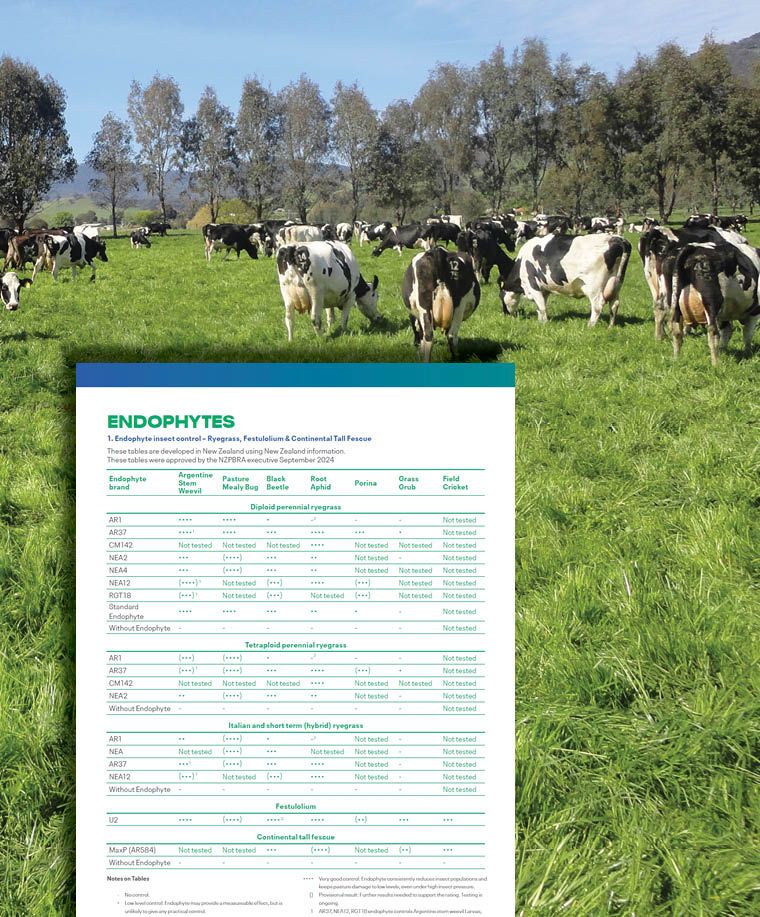Get in Touch
Contact Us
National team

Find Your Local Sales Agronomist
Somerset SE is a mid-heading (+3 days), diploid perennial ryegrass suited to beef, sheep and dairy grazing systems. With impressive seedling vigour to provide rapid establishment, combined with good autumn/winter/spring yields, Somerset is a reliable dry matter producer. With medium tiller density and tolerance to a wide range of insect pests, Somerset displays very good pasture persistence.
Due to Somerset containing Standard Endophyte, it does require careful grazing management, particularly during drier times of the year when the possibility of ryegrass staggers is increased.
Sowing rate (sole): 20-25kg/ha
Sowing rate (mixed): 15-20kg/ha

Somerset was bred from plants selected from a wide range of environments. Somerset has good rust tolerance and reduced stem production in spring. Somerset has been very successfully used on dairy, sheep and beef farms where farmers want strong and reliable pasture production.
Somerset perennial ryegrass pasture seed can be sown at 15-25 kg/ha with Superstrike® treated clover. Sowing depth is important as is the seed to soil contact, given that Somerset is a small seed. Ensure that the depth of sowing is between 5 and 15mm for optimum establishment rate and early vigour.
If the seed is sown too deep, then the seed will be delayed in its establishment which then has an impact on other important management decisions such as weed control and timing, insect pest management and grazing timing.
For pasture seed sowing rates specific to your farming needs, contact your local DLF Seeds Sales Agronomist here
Somerset perennial ryegrass will produce better under rotational grazing. Avoid hard set stocking during periods of stress (eg. droughts, low fertility and insect attack).
The first grazing should be a light grazing to encourage tiller development and secondary root growth. This shouldn’t take place until the plants can withstand the “pull test” which is a simple and fast way to identify if the plants have established well enough to handle grazing by an animal. The first grazing should be done with sheep or a light class of cattle and ensure that the ground is relatively firm, to minimise any potential damage that could be caused by the animals moving across the new pasture.
The first grazing is also a very important aspect of managing a newly sown pasture, especially if the pasture includes other species such as clover as it allows for light to be able to get down to the newly emerging clover plants for them to continue to grow and develop and be an integral part of the overall pasture for years to come.
Minimum 600mm rainfall per annum unless irrigated

